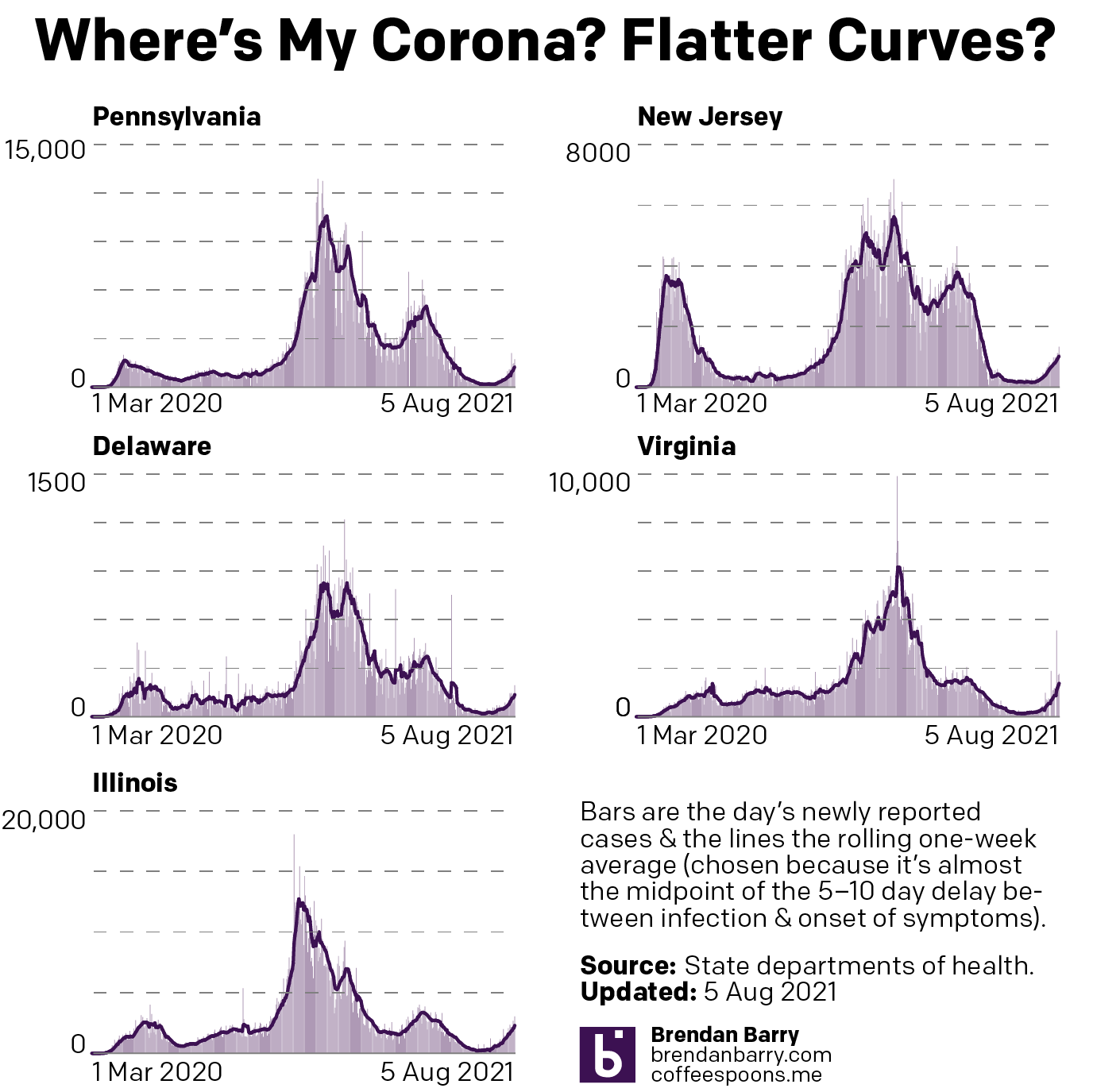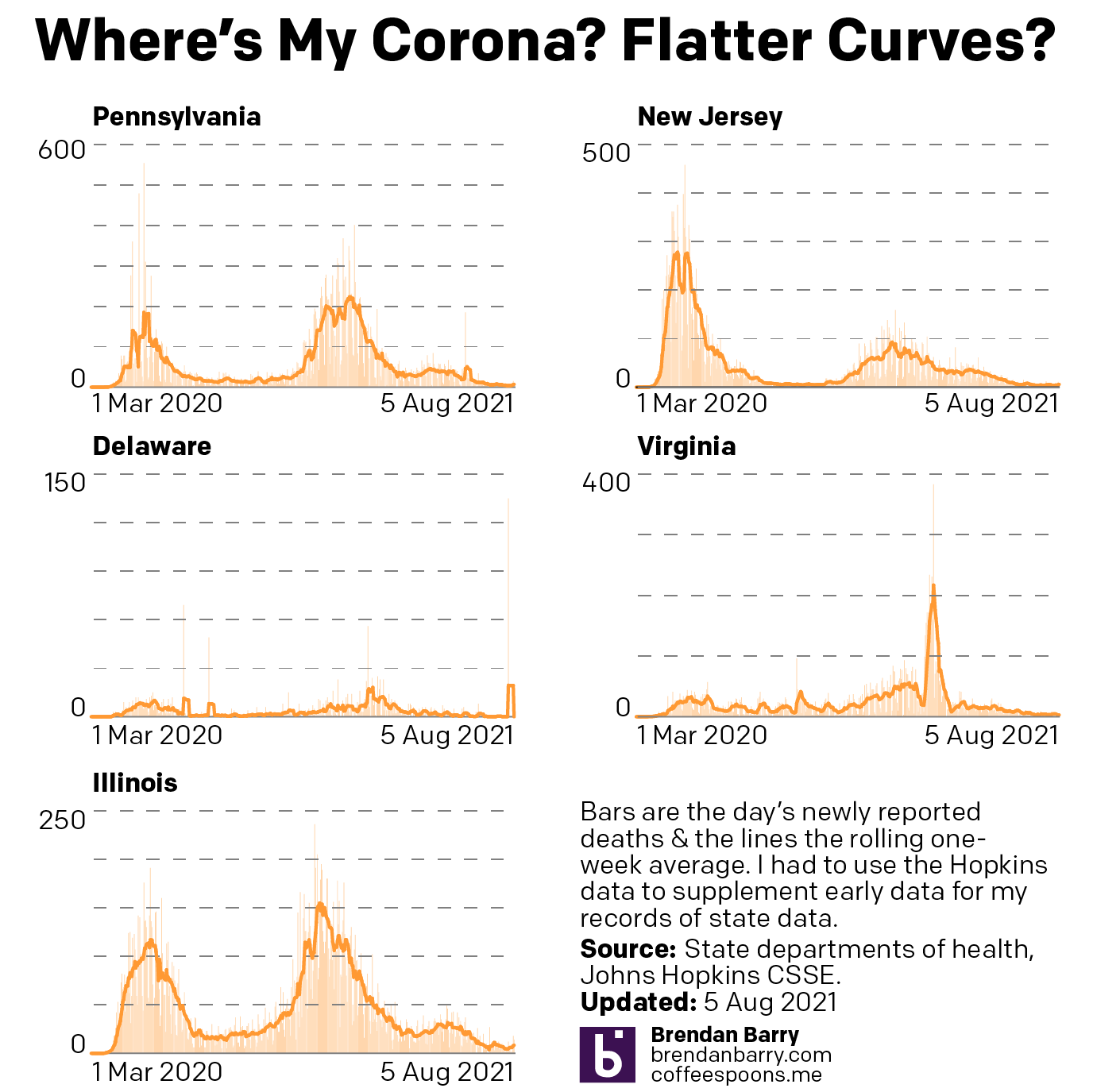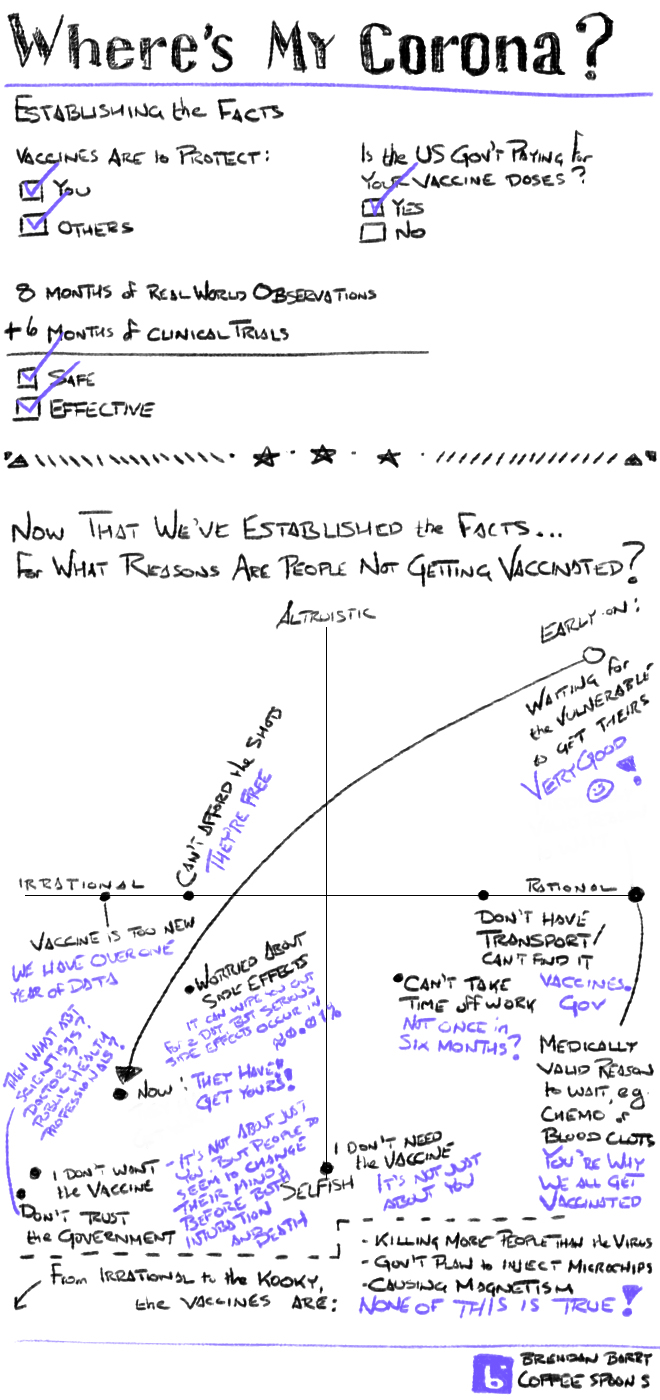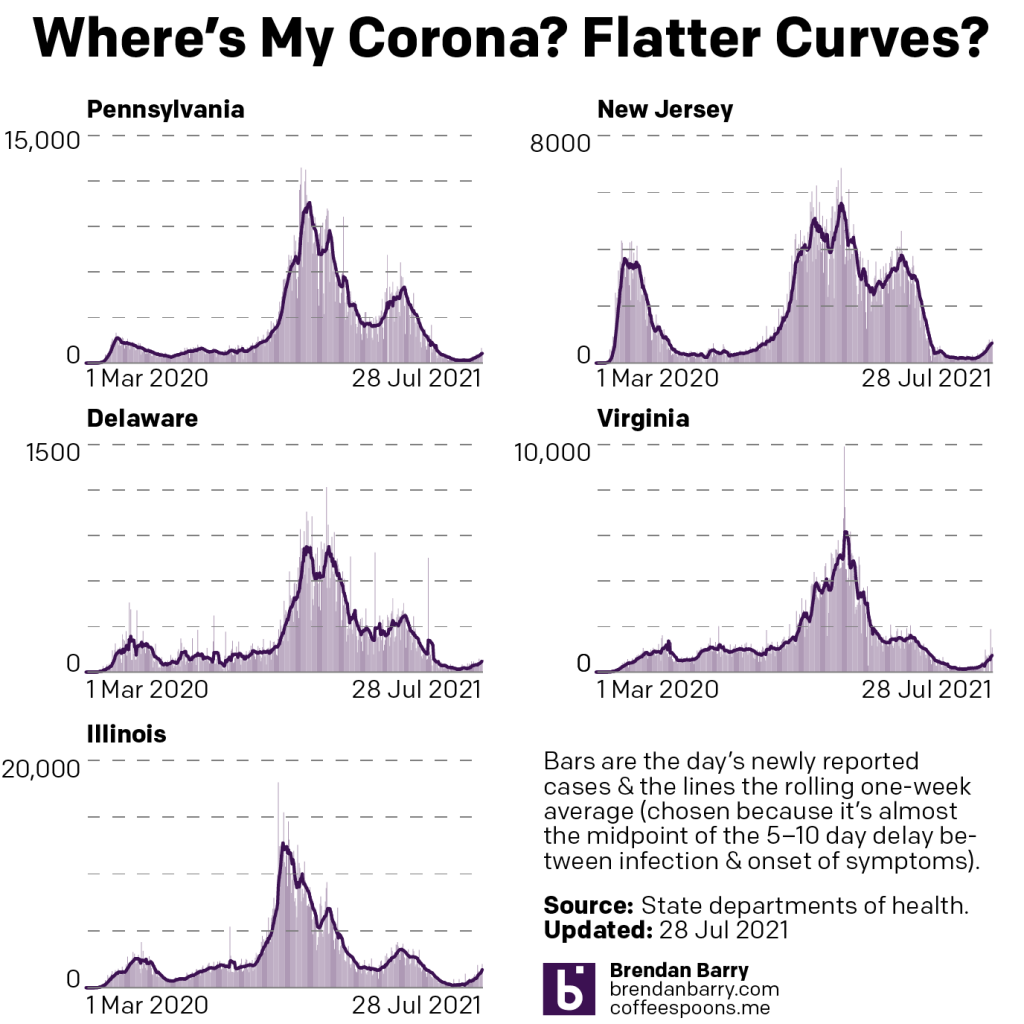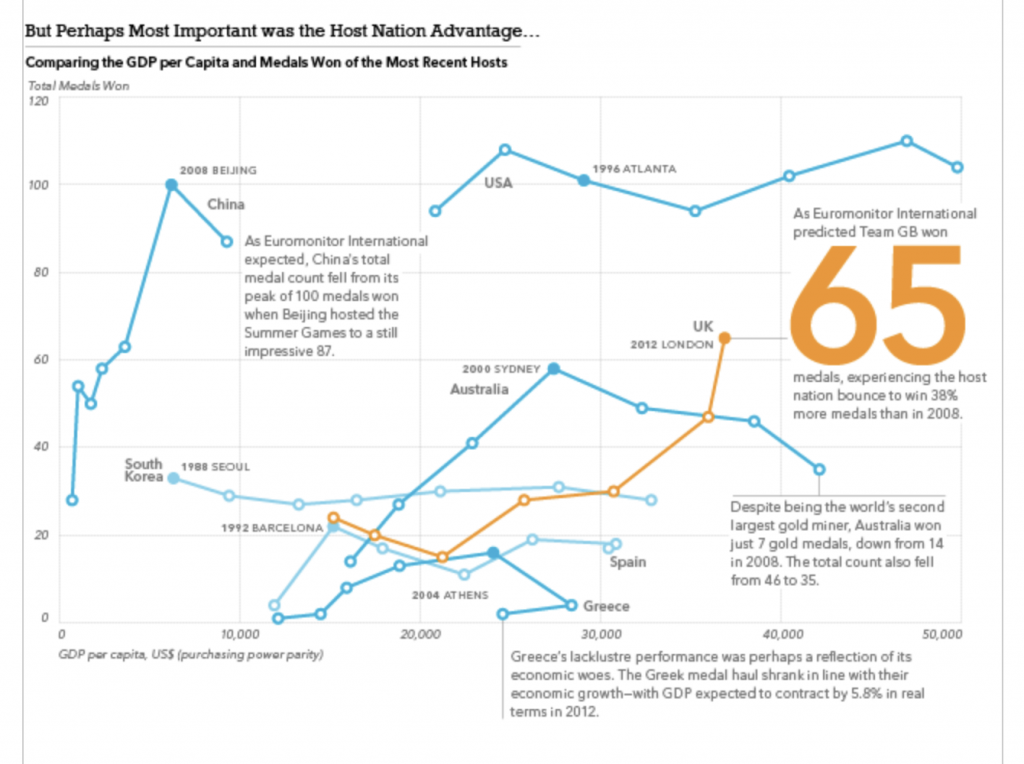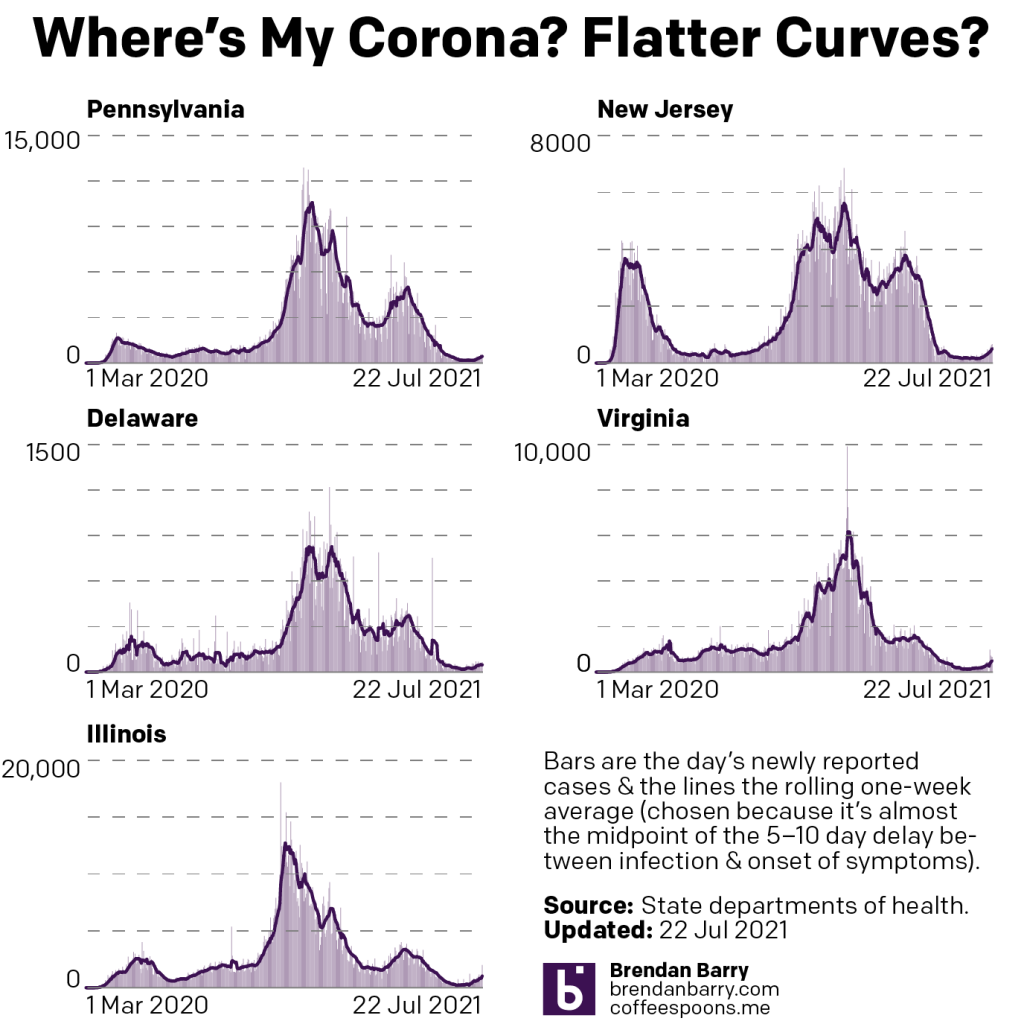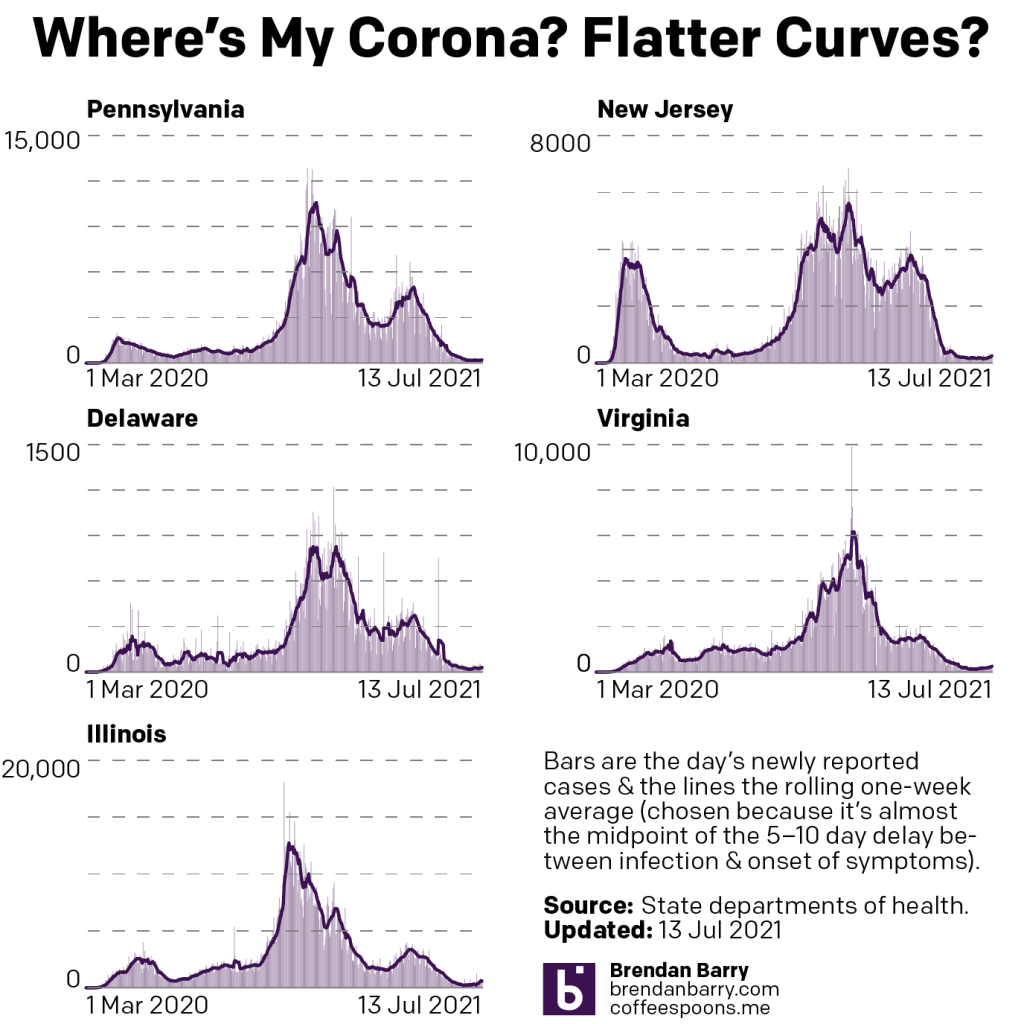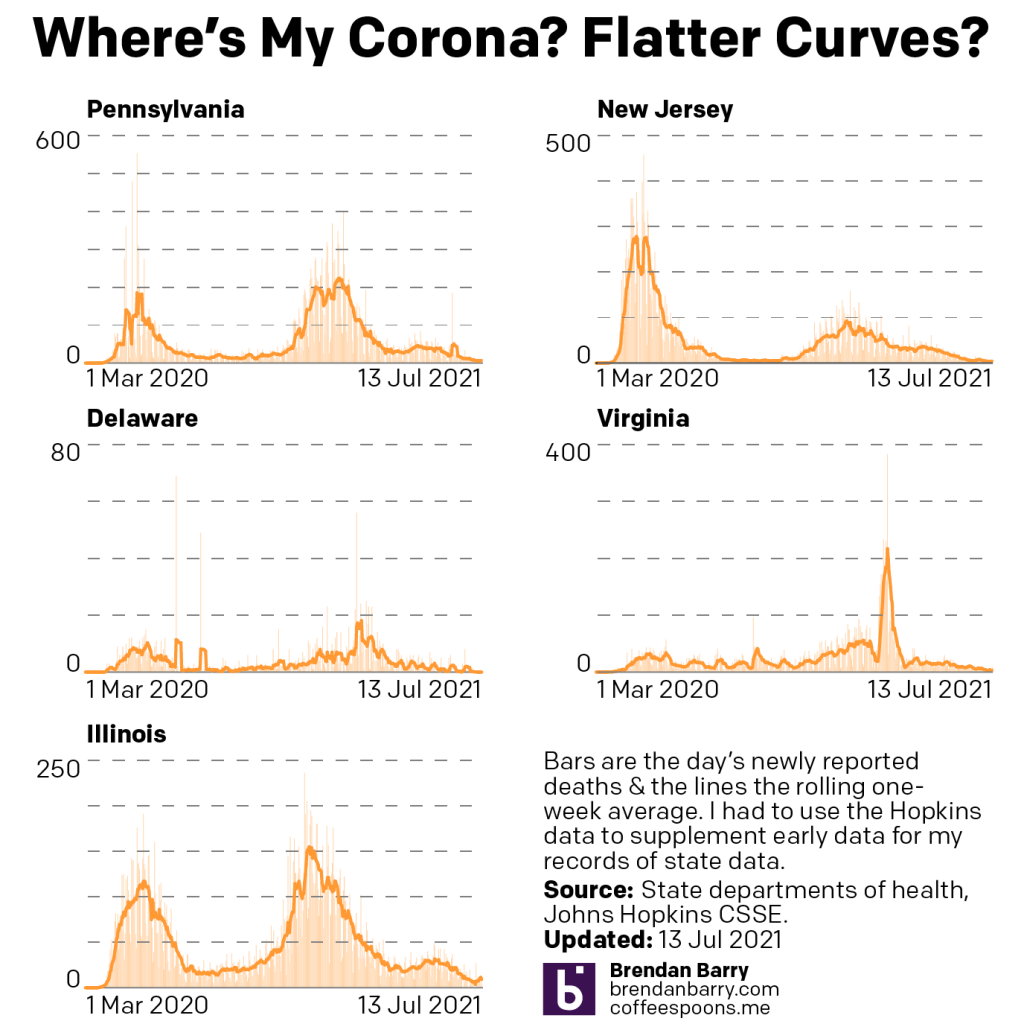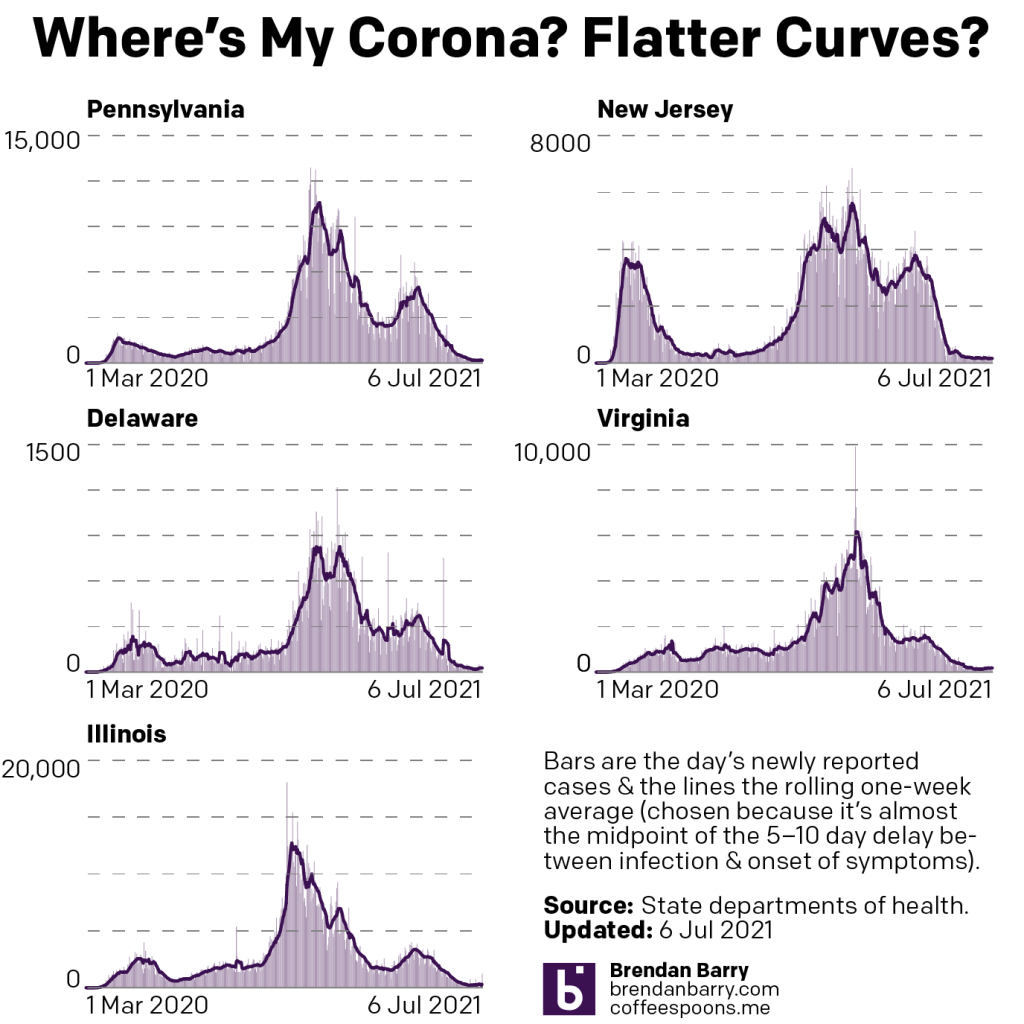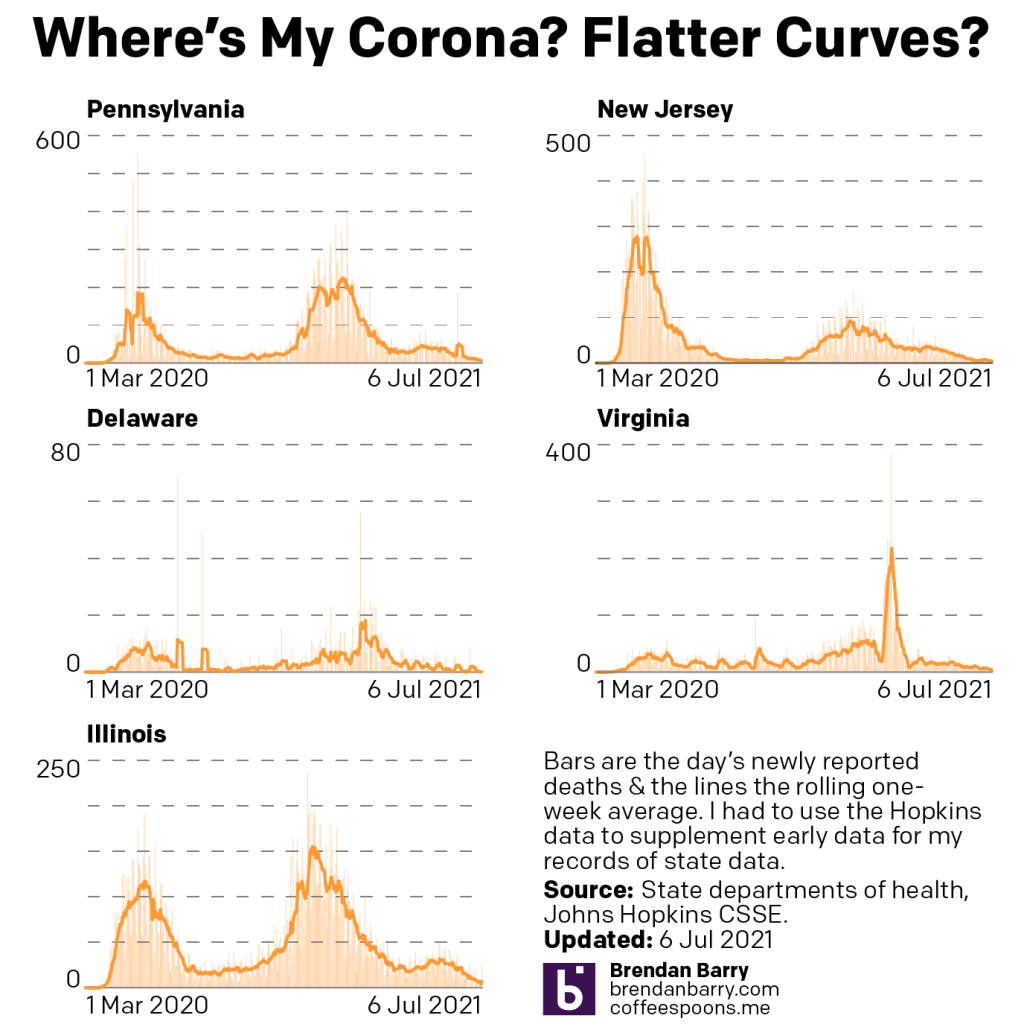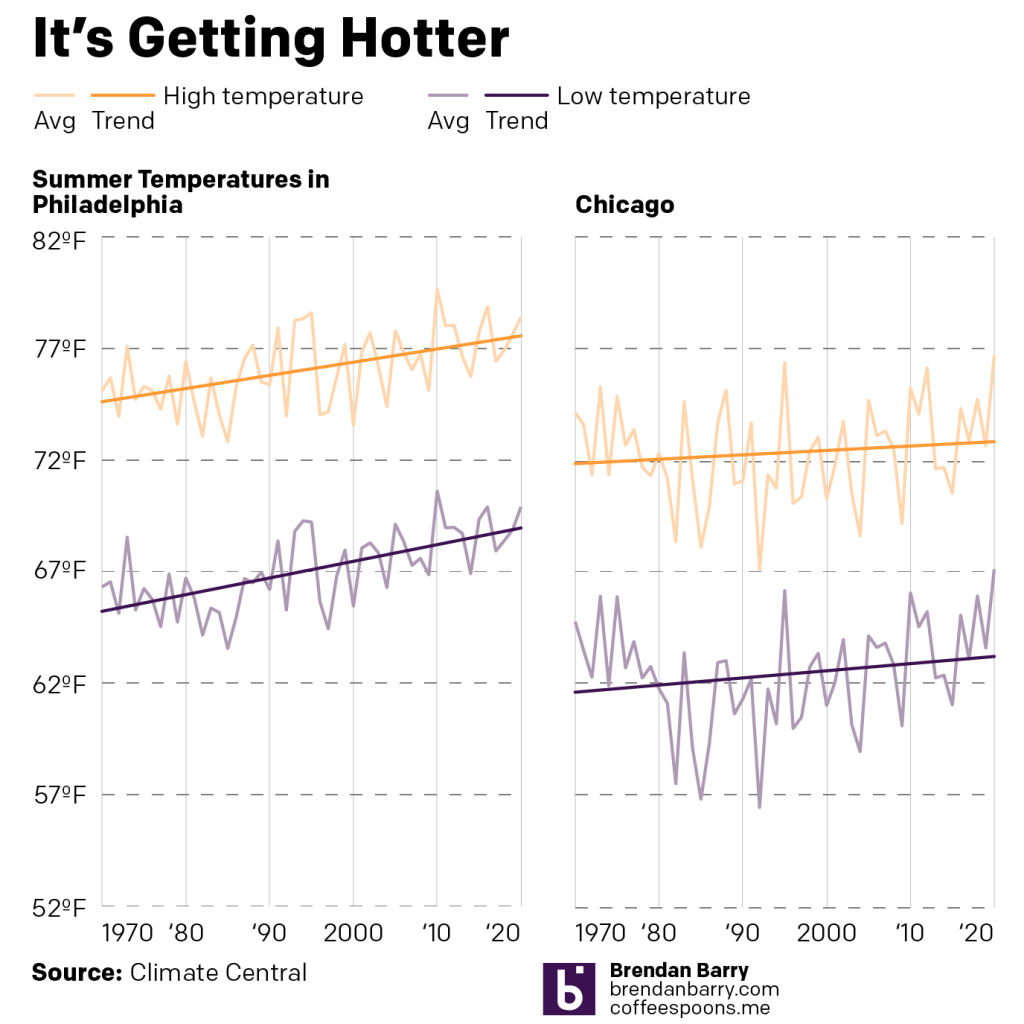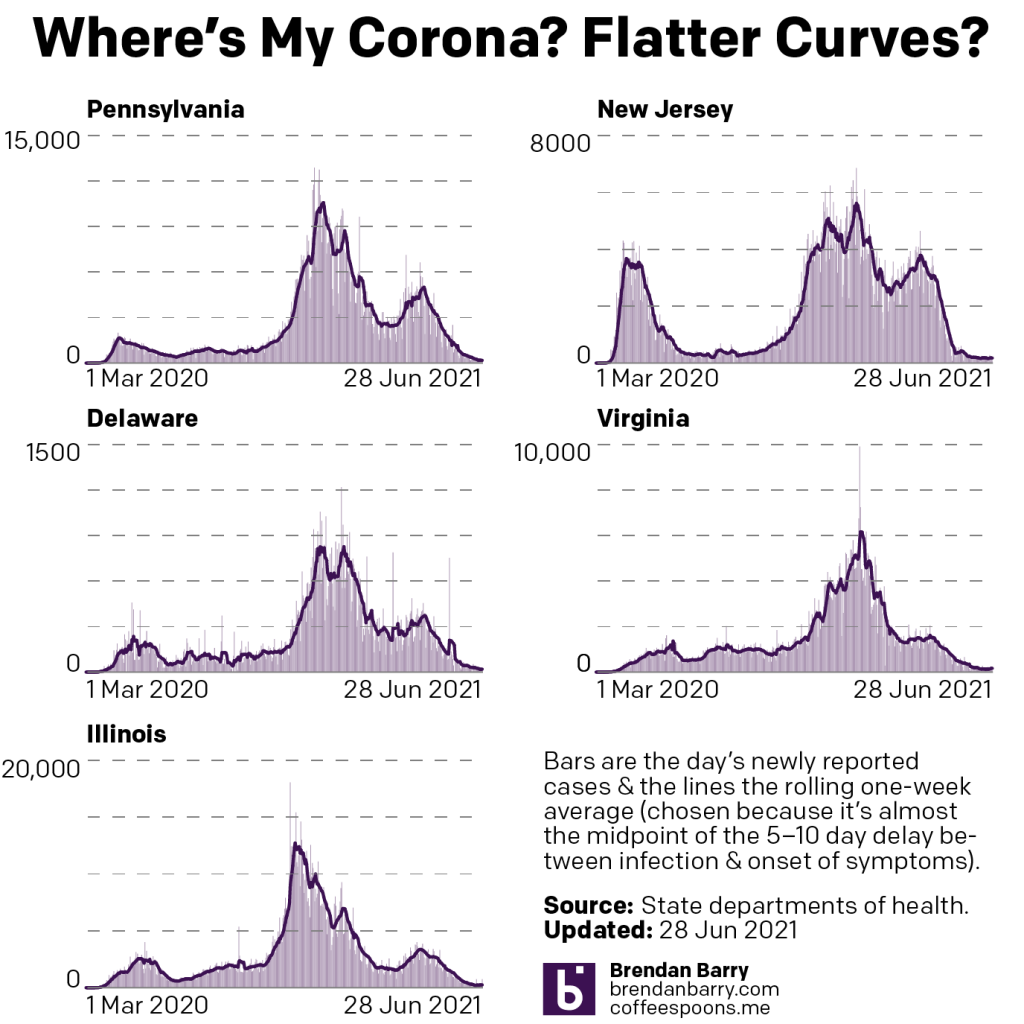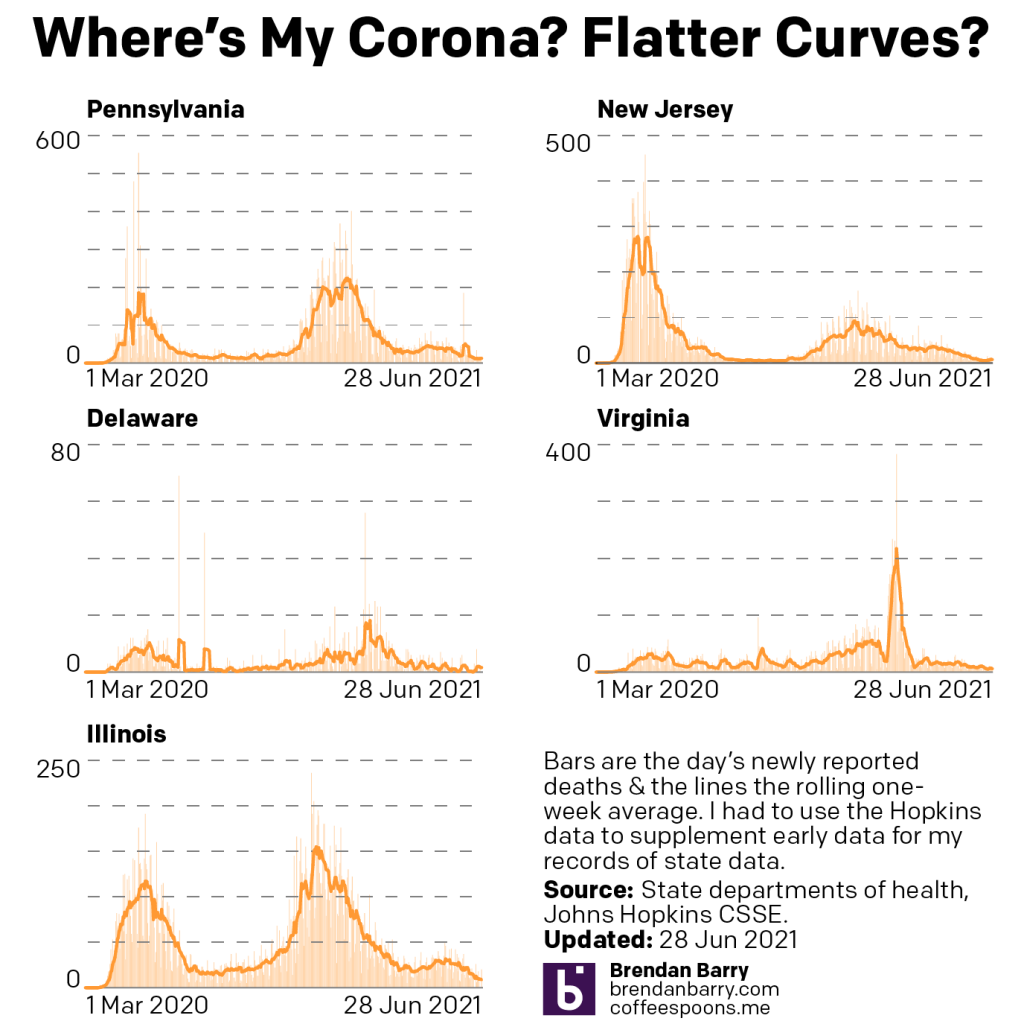Late last week I provided a brief update on the Covid-19 situation in Pennsylvania, New Jersey, Delaware, Virginia, and Illinois. Today I wanted to circle back to my statement that I’d update everyone again early this week. Of course, we had to wait until states began reporting their Monday data to get a better sense of where we are at in terms of new cases and deaths.
Spoiler: nowhere good.
Let’s start, as usual, with new cases.
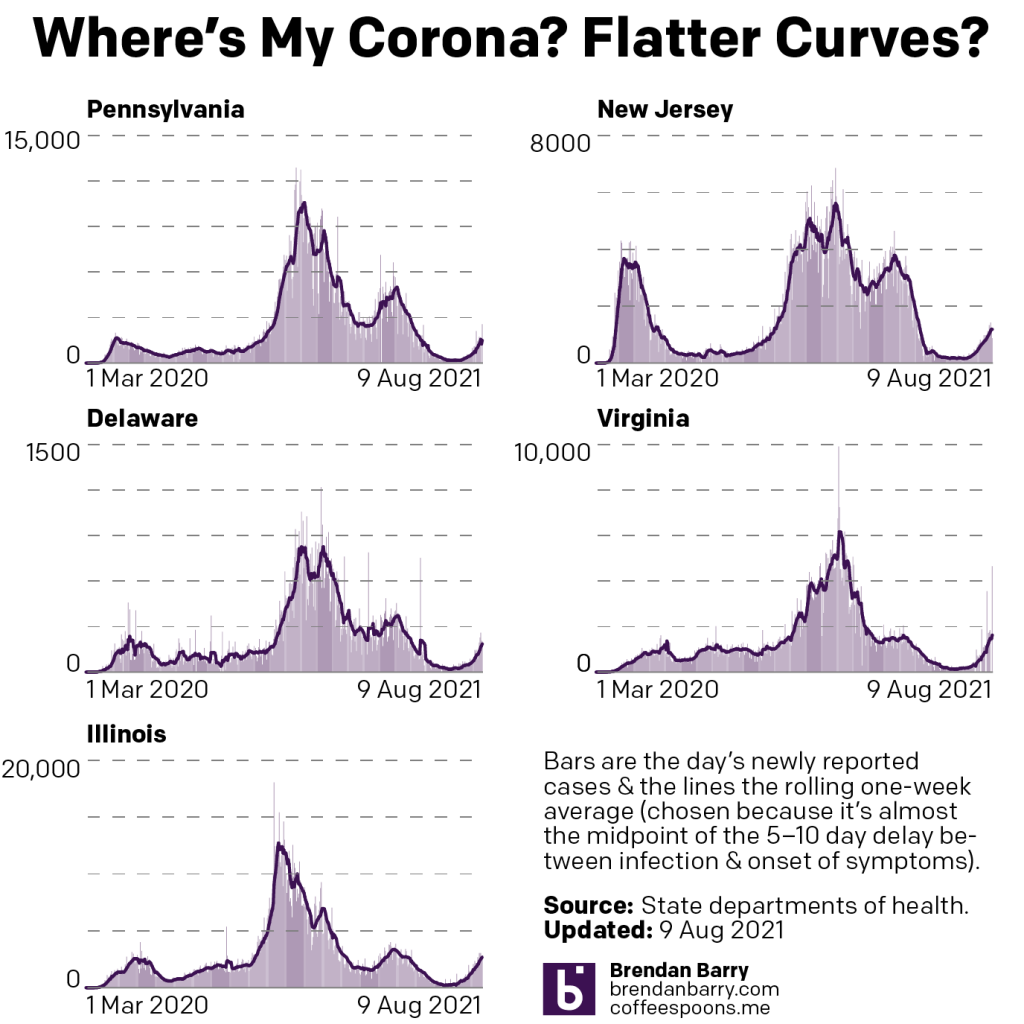
We can see just from the tail end of the charts above that new case growth is accelerating in nearly all five states. Nearly because New Jersey’s growth has remained fairly constant, in other words the number of new people getting infected is not becoming larger each day but remaining relatively flat. That said, compared to 28 July, my last more thorough update, the seven-day average for new cases is still up by 66%.
In the other four states we see accelerating growth, i.e. the number of people infected grows daily. Virginia and Illinois are perhaps in the worst positions. Consider that earlier this spring during the Third Wave, Virginia peaked with a seven-day average of 1615 new cases per day. Yesterday the seven-day average reached 1625. This Fourth Wave is making more people sick now than they were in the spring. Illinois is not yet at the peak of its Third Wave, 3390 new cases per day, but yesterday the Land of Lincoln reached 2713. It’s not far from that ugly benchmark. Can Illinois’ seven-day average see an increase of about 600 new cases per day in a week? Consider that one week ago the average was at 1914. That’s an 800-new case increase. I would expect that if my next update is next Tuesday we will find Illinois in a worse position now than it was in this past spring.
What about the last two states of the tri-state area? Fortunately—for now—both Pennsylvania and Delaware remain below, roughly by half or so, their springtime peaks during the Third Wave. In part, that’s because—along with New Jersey—the Northeast has some of the highest rates of vaccination. But none of those states are near the levels we would need for herd immunity, especially given the increased transmissibility of the Delta variant.
In Pennsylvania the seven-day average for new cases is now just shy of 1500 new cases per day. Interestingly, if we halve the Monday data that includes both Sunday and Monday the daily numbers of new cases have declined for five consecutive days. I wouldn’t expect that trend to continue given the rampancy with which Delta is spreading throughout the Commonwealth, but that would be the signal in the data we would be looking for when this Fourth Wave breaks.
Delaware reports much the same. Cases are significantly up, but now so much so as to outpace the Third Wave. The First State’s seven-day average now sits at 185 new cases per day, but for the past four days the daily number has exceeded 200. Unlike Pennsylvania, that’s not the signal we would want to see to give us a sense the wave might be breaking.
What about deaths? Last week I mentioned we were seeing those numbers begin to creep back up despite falling during the initial weeks of the Delta wave.
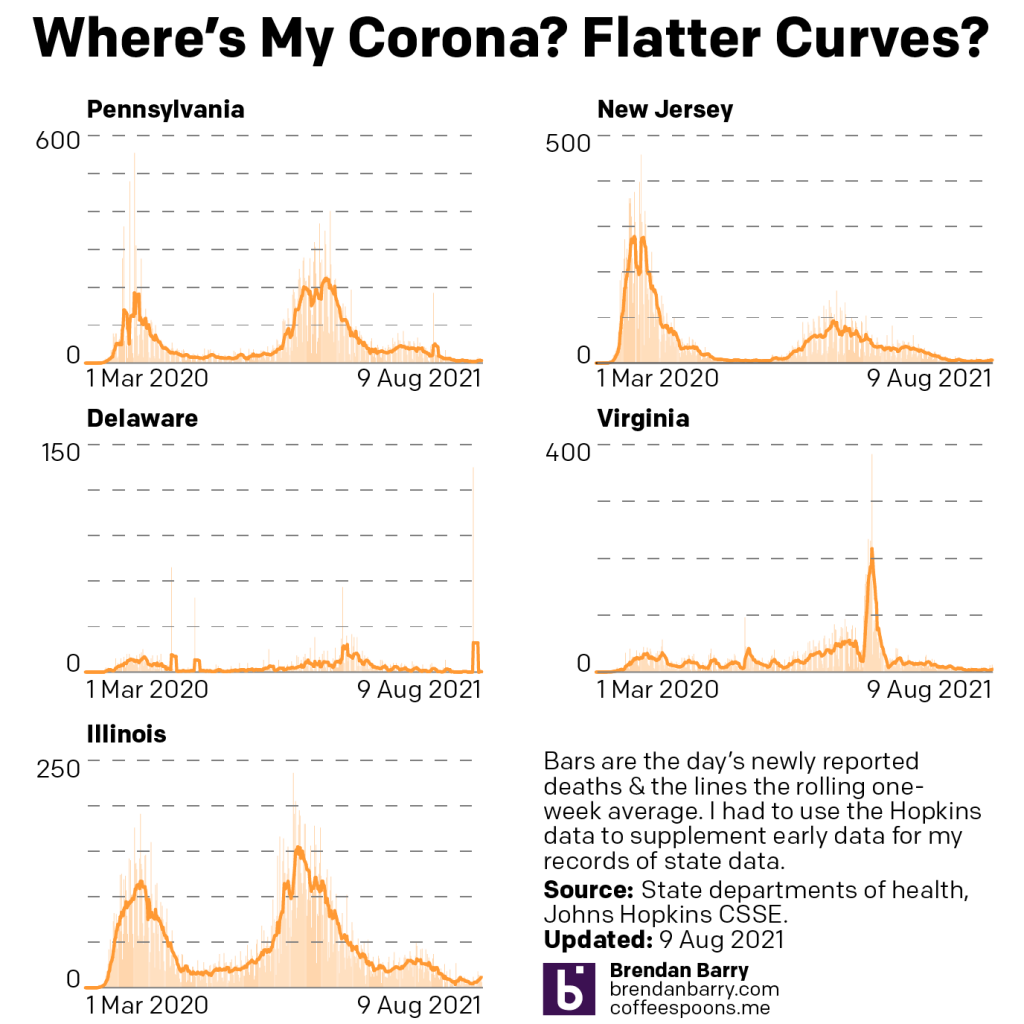
The tail ends here, with the exception of Illinois, are far harder to see. In Illinois, on 28 July the seven-day average for deaths bottomed out at 4 deaths per day. Deaths have climbed ever since, tripling to 12 deaths per day. Prior to yesterday, the state had seen double-digit daily deaths for five consecutive days for the first time since early June. These are signs that deaths are heading in the wrong direction. But if we want to try and find a glimmer of hope, those deaths started at 18 on 4 August, but have dropped each day landing at 10 on 8 August and just 6 yesterday. Fingers crossed?
In the remaining states the picture is similar in that deaths are rising, but not nearly as badly as they are in Illinois. In Illinois the death rate tripled, but to be fair it also did so in Delaware. Though that meant climbing from 0.1 to 0.3. In the states where we are seeing deaths from Covid-19, the rates have not even doubled. Pennsylvania and New Jersey are the two closest to hitting that grim number. Their seven-day averages of 3.6 and 3.7, respectively, have reached only 6.6 and 6.4, respectively. Certainly not good, but perhaps we can be cautiously optimistic given the states’ relatively high rate of vaccination.
In Virginia we have seen the death rate climb from an average of 4.4 per day, nearly the same rate as Illinois, which has a lower overall rate of vaccination, to only 5.6 deaths per day as of yesterday.
It is important to note that vaccinations are doing a good job at keeping the vaccinated from needing to go to hospital or even dying. The phrase “pandemic of the unvaccinated” is very accurate. Whilst the vaccinated can become infected, most suffer very mild symptoms or are asymptomatic. The reason for masking is that the Delta variant can infect the vaccinated to such a degree that, whilst not sick, they can infect the unvaccinated.
If you have not been vaccinated yet, it is critical that you do so. They are safe. They are effective. And they are free. There are only a few valid reasons for not receiving the vaccination. And “not wanting it” or “not needing it” or “not trusting the government” or “not sure whence the virus came” are not valid excuses.

